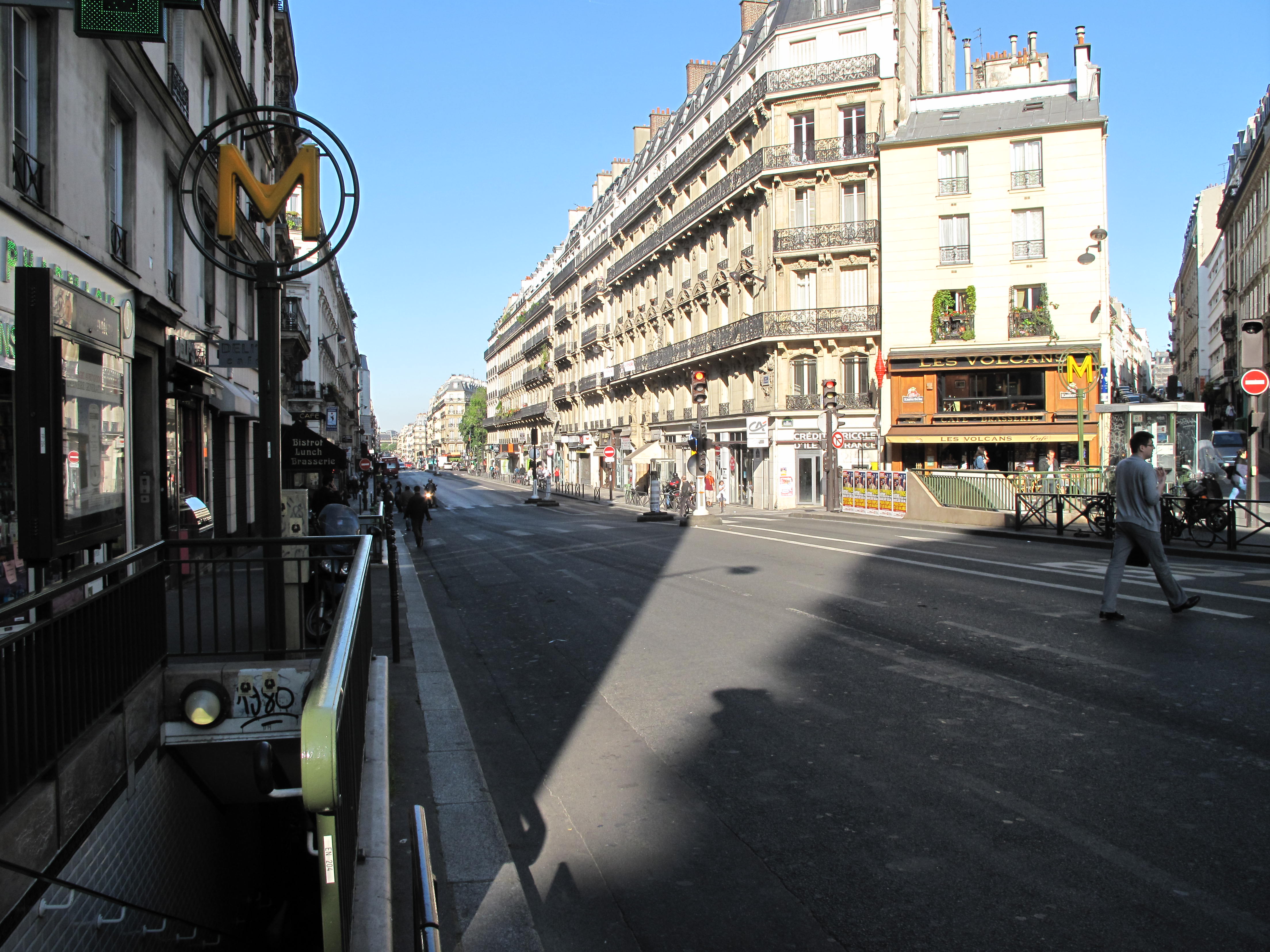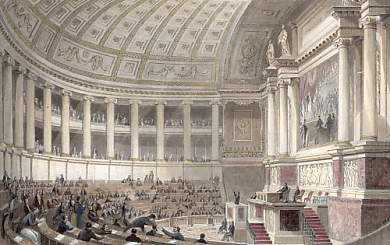|
Gaspard De Chabrol
Gilbert Joseph Gaspard, comte de Chabrol de Volvic (25 September 1773, Riom, Puy-de-Dôme – 30 April 1843, Paris) was a French official. Biography Gaspard de Chabrol was born on the 25 September 1773 in Riom, Puy-de-Dôme, Auvergne, the youngest son of Gaspard-Claude-François, comte de Chabrol, a noble and statesman. Napoleonic era Graduating from the École Polytechnique, Chabrol was designated ''ingénieur des ponts et chaussées'' (18 April 1796), but was soon after sent to Egypt as part of the scientific commission which followed Napoleon's campaign. He published several works inspired by his time in Egypt, ranging from topographical studies to an essay on the mores of the Egyptian people. Between 1803 and 1806 he was subprefect of the town of Pontivy, which the central authorities were trying to turn into an administrative and military center of a highly royalist Brittany. Chabrol drew the plans for the "new town", which was renamed Napoléonville in 1804, greatly exp ... [...More Info...] [...Related Items...] OR: [Wikipedia] [Google] [Baidu] |
Count
Count (feminine: countess) is a historical title of nobility in certain European countries, varying in relative status, generally of middling rank in the hierarchy of nobility. Pine, L. G. ''Titles: How the King Became His Majesty''. New York: Barnes & Noble, 1992. p. 73. . The etymologically related English term "county" denoted the territories associated with the countship. Definition The word ''count'' came into English from the French ''comte'', itself from Latin ''comes''—in its accusative ''comitem''—meaning “companion”, and later “companion of the emperor, delegate of the emperor”. The adjective form of the word is "comital". The British and Irish equivalent is an earl (whose wife is a "countess", for lack of an English term). In the late Roman Empire, the Latin title ''comes'' denoted the high rank of various courtiers and provincial officials, either military or administrative: before Anthemius became emperor in the West in 467, he was a military ''comes ... [...More Info...] [...Related Items...] OR: [Wikipedia] [Google] [Baidu] |
Hundred Days
The Hundred Days (french: les Cent-Jours ), also known as the War of the Seventh Coalition, marked the period between Napoleon's return from eleven months of exile on the island of Elba to Paris on20 March 1815 and the second restoration of King Louis XVIII on 8 July 1815 (a period of 110 days). This period saw the War of the Seventh Coalition, and includes the Waterloo Campaign, the Neapolitan War as well as several other minor campaigns. The phrase ''les Cent Jours'' (the hundred days) was first used by the prefect of Paris, Gaspard, comte de Chabrol, in his speech welcoming the king back to Paris on 8 July. Napoleon returned while the Congress of Vienna was sitting. On 13March, seven days before Napoleon reached Paris, the powers at the Congress of Vienna declared him an outlaw, and on 25March Austria, Prussia, Russia and the United Kingdom, the four Great Powers and key members of the Seventh Coalition, bound themselves to put 150,000 men each into the field to end ... [...More Info...] [...Related Items...] OR: [Wikipedia] [Google] [Baidu] |
Boulevard De Magenta
The boulevard de Magenta is located in the Ninth and Tenth arrondissements of Paris, France. It begins at place de la République and 1, rue Beaurepaire, and ends at 1, boulevard de Rochechouart and 53, boulevard de la Chapelle. Etymology It is named after the battle of Magenta, a battle fought on 4 June 1859 near Magenta in Italy. It was a victory by the Piedmontais of the kingdom of Piedmont-Sardinia and by the French armée d'Italie under general Patrice de MacMahon and Napoléon III over the Austrians under Guylay. History The creation of the boulevard de Magenta was part of the Hausmannian transformation of Paris. It was completed in 1855 between rue du Faubourg-Saint-Martin and the boulevard de Rochechouart (the boulevard here in fact follows the route of the old rue du Nord which formed a part of an 1827 subdivision) and in 1859 between place de la République and rue du Faubourg-Saint-Martin. Stations Métro * République * Jacques-Bonsergent * Barbès - Roche ... [...More Info...] [...Related Items...] OR: [Wikipedia] [Google] [Baidu] |
Rue La Fayette
The rue La Fayette is a street in the 9th district and 10th arrondissement of Paris between the rue du Faubourg Saint-Martin and the rue du Faubourg Poissonnière. History The street was opened in 1823. It was created by Claude Rambuteau and Georges-Eugène Haussmann. It was the original location of the Galeries Lafayette. This street bears the name of the Marquis de La Fayette (1757-1834), hero of the American Revolutionary War The American Revolutionary War (April 19, 1775 – September 3, 1783), also known as the Revolutionary War or American War of Independence, was a major war of the American Revolution. Widely considered as the war that secured the independence of t .... References {{Parisstreetcat2, 10, La Fayette ... [...More Info...] [...Related Items...] OR: [Wikipedia] [Google] [Baidu] |
Charles X Of France
Charles X (born Charles Philippe, Count of Artois; 9 October 1757 – 6 November 1836) was King of France from 16 September 1824 until 2 August 1830. An uncle of the uncrowned Louis XVII and younger brother to reigning kings Louis XVI and Louis XVIII, he supported the latter in exile. After the Bourbon Restoration in 1814, Charles (as heir-presumptive) became the leader of the ultra-royalists, a radical monarchist faction within the French court that affirmed rule by divine right and opposed the concessions towards liberals and guarantees of civil liberties granted by the Charter of 1814. Charles gained influence within the French court after the assassination of his son Charles Ferdinand, Duke of Berry, in 1820 and succeeded his brother Louis XVIII in 1824.Munro Price, ''The Perilous Crown: France between Revolutions'', Macmillan, pp. 185–187. His reign of almost six years proved to be deeply unpopular amongst the liberals in France from the moment of his coronation in ... [...More Info...] [...Related Items...] OR: [Wikipedia] [Google] [Baidu] |
Legion Of Honour
The National Order of the Legion of Honour (french: Ordre national de la Légion d'honneur), formerly the Royal Order of the Legion of Honour ('), is the highest French order of merit, both military and civil. Established in 1802 by Napoleon, Napoleon Bonaparte, it has been retained (with occasional slight alterations) by all later French governments and regimes. The order's motto is ' ("Honour and Fatherland"); its Seat (legal entity), seat is the Palais de la Légion d'Honneur next to the Musée d'Orsay, on the left bank of the Seine in Paris. The order is divided into five degrees of increasing distinction: ' (Knight), ' (Officer), ' (Commander (order), Commander), ' (Grand Officer) and ' (Grand Cross). History Consulate During the French Revolution, all of the French Order of chivalry, orders of chivalry were abolished and replaced with Weapons of Honour. It was the wish of Napoleon, Napoleon Bonaparte, the French Consulate, First Consul, to create a reward to commend c ... [...More Info...] [...Related Items...] OR: [Wikipedia] [Google] [Baidu] |
Père Lachaise Cemetery
Père Lachaise Cemetery (french: Cimetière du Père-Lachaise ; formerly , "East Cemetery") is the largest cemetery in Paris, France (). With more than 3.5 million visitors annually, it is the most visited necropolis in the world. Notable figures in the arts buried at Père Lachaise include Michel Ney, Frédéric Chopin, Émile Waldteufel, Édith Piaf, Marcel Proust, Georges Méliès, Marcel Marceau, Sarah Bernhardt, Oscar Wilde, Thierry Fortineau, J.R.D. Tata, Jim Morrison and Sir Richard Wallace. The Père Lachaise is located in the 20th arrondissement of Paris, 20th arrondissement and was the first garden cemetery, as well as the first municipal cemetery in Paris. It is also the site of three World War I memorials. The cemetery is located on the Boulevard de Ménilmontant. The Paris Métro station Philippe Auguste (Paris Métro), Philippe Auguste on Paris Métro Line 2, Line 2 is next to the main entrance, while the station Père Lachaise (Paris Métro), Père Lachaise, on both ... [...More Info...] [...Related Items...] OR: [Wikipedia] [Google] [Baidu] |
July Monarchy
The July Monarchy (french: Monarchie de Juillet), officially the Kingdom of France (french: Royaume de France), was a liberal constitutional monarchy in France under , starting on 26 July 1830, with the July Revolution of 1830, and ending 23 February 1848, with the Revolution of 1848. It marks the end of the Bourbon Restoration (1814–1830). It began with the overthrow of the conservative government of Charles X, the last king of the House of Bourbon. , a member of the more liberal Orléans branch of the House of Bourbon, proclaimed himself as ("King of the French") rather than "King of France", emphasizing the popular origins of his reign. The king promised to follow the ''juste milieu'', or the middle-of-the-road, avoiding the extremes of both the conservative supporters of Charles X and radicals on the left. The July Monarchy was dominated by wealthy bourgeoisie and numerous former Napoleonic officials. It followed conservative policies, especially under the influence ... [...More Info...] [...Related Items...] OR: [Wikipedia] [Google] [Baidu] |
Chamber Of Deputies (France)
Chamber of Deputies (french: Chambre des députés) was a parliamentary body in France in the nineteenth and twentieth centuries: * 1814–1848 during the Bourbon Restoration and the July Monarchy, the Chamber of Deputies was the lower house of the French Parliament, elected by census suffrage. * 1875–1940 during the French Third Republic, the Chamber of Deputies was the legislative assembly of the French Parliament, elected by universal suffrage. When reunited with the Senate in Versailles, the French Parliament was called the National Assembly (''Assemblée nationale'') and carried out the election of the president of the French Republic. During the Bourbon Restoration Created by the Charter of 1814 and replacing the Corps législatif, which existed under the First French Empire, the Chamber of Deputies was composed of individuals elected by census suffrage. Its role was to discuss laws and, most importantly, to vote taxes. According to the Charter, deputies were elected f ... [...More Info...] [...Related Items...] OR: [Wikipedia] [Google] [Baidu] |
École Départementale D'Architecture De Volvic , a Japanese video-games developer/publisher
{{disambiguation, geo ...
École may refer to: * an elementary school in the French educational stages normally followed by secondary education establishments (collège and lycée) * École (river), a tributary of the Seine flowing in région Île-de-France * École, Savoie, a French commune * École-Valentin, a French commune in the Doubs département * Grandes écoles, higher education establishments in France * The École, a French-American bilingual school in New York City Ecole may refer to: * Ecole Software This is a list of Notability, notable video game companies that have made games for either computers (like PC or Mac), video game consoles, handheld or mobile devices, and includes companies that currently exist as well as now-defunct companies. ... [...More Info...] [...Related Items...] OR: [Wikipedia] [Google] [Baidu] |
Popular Education
Popular education is a concept grounded in notions of class, political struggle, and social transformation. The term is a translation from the Spanish educación popular or the Portuguese educação popular and rather than the English usage as when describing a 'popular television programme', popular here means 'of the people'. More specifically 'popular' refers to the 'popular classes', which include peasants, the unemployed, the working class and sometimes the lower middle class. The designation of 'popular' is meant most of all to exclude the upper class and upper middle class. Popular education is used to classify a wide array of educational endeavours and has been a strong tradition in Latin America since the end of the first half of the 20th century. These endeavors are either composed of or carried out in the interests of the popular classes. The diversity of projects and endeavors claiming or receiving the label of popular education makes the term difficult to precisel ... [...More Info...] [...Related Items...] OR: [Wikipedia] [Google] [Baidu] |
_p4.545_CHABROL_de._VOLVIC_(Gilbert-Joseph-Gaspard%2C_Comte_de).jpg)






